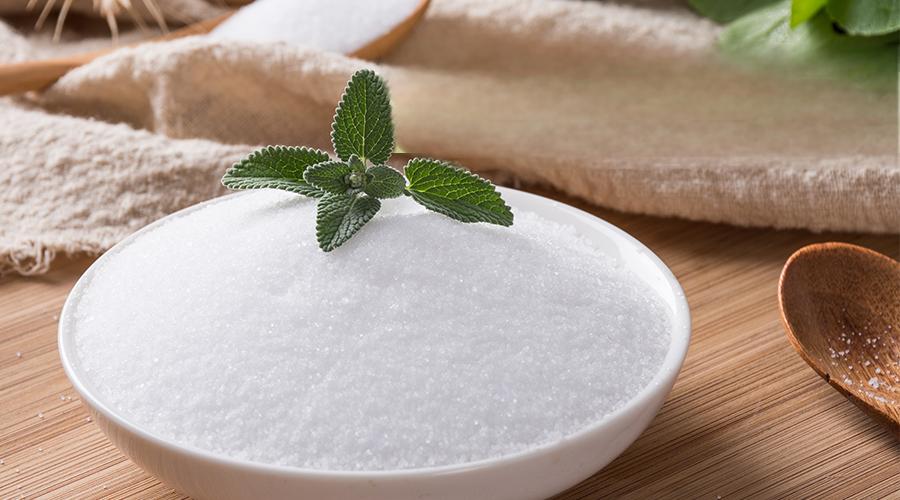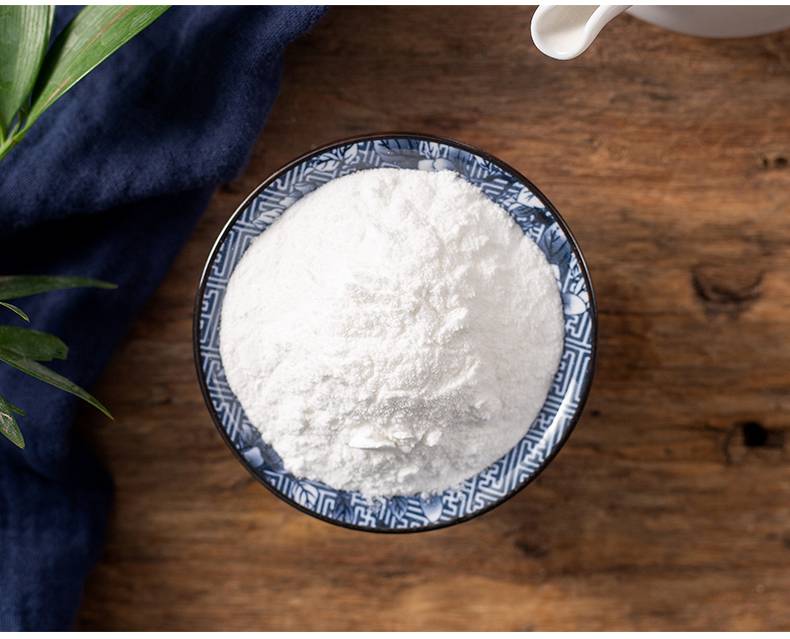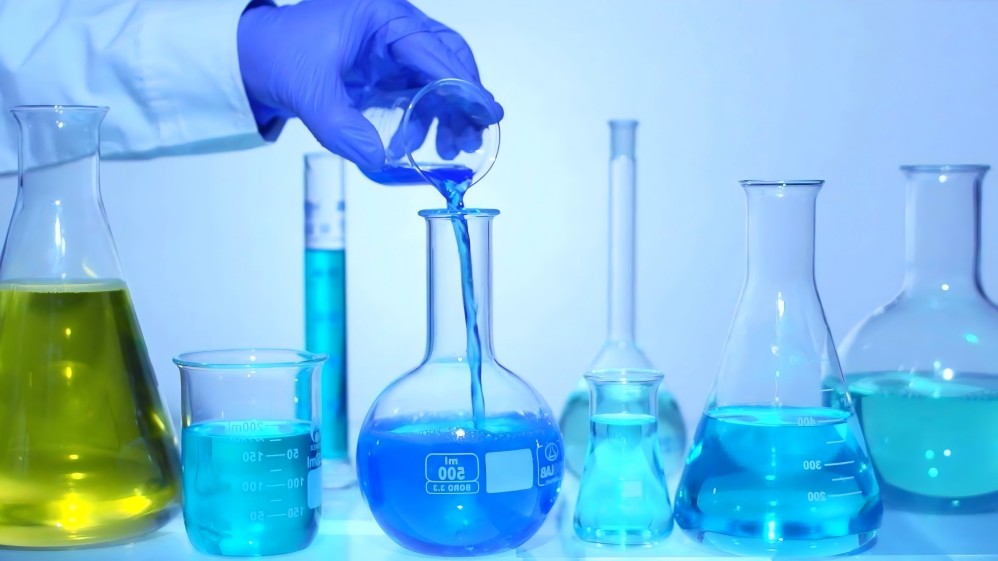What Are the Uses of Arabinose?
L-Arabinose, also known as Arabinose , with the molecular formula C5H10O5, is a natural monosaccharide. It was first extracted from the colloid secreted by the arabica tree through complex chemical and physical methods, so it was named arabinose.
L arabinose currently circulating in the domestic market is mainly extracted from corn kernel, corn husk and other graminaceous plant fibers, and exists in the state of white or off-white needle crystallization under normal temperature and pressure [1-2]. Since L-arabinose does not cause changes in blood glucose level, it is basically unavailable to the human body and does not produce calories, it is often referred to as a low-energy sweetener.
Figure 1 Larabinose Chain Structure
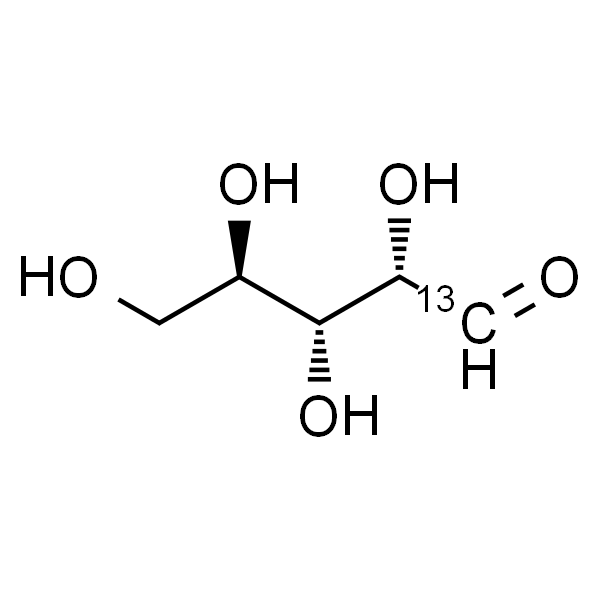
It is worthwhile to note that L arabinose is not only a low-energy natural sugar, but also a natural inhibitor of sucrase, which can bind to sucrase in the small intestine and inhibit the enzyme activity through non-competitive interaction, thus inhibiting the digestion and absorption of sucrose [3]. Sucrose is used as a sweetener or other ingredients in many foods, so our daily intake is very large, and excessive intake will bring many health problems to our body, L arabinose and sucrose together may reduce the health problems caused by excessive intake of sucrose. In addition, L arabinose has been found to have intestinal regulatory functions and prebiotic effects [4].
Currently, arabinose has been certified by the regulations of many countries. The former Ministry of Health of China approved L arabinose as a new resource food (derived from corn cob, corn husk, and other grass fibers) in 2008, and the scope of use is for all kinds of food except infant food; the United States approved L arabinose as a GRAS substance (Generally Recognized As Safe Substance), which can be used in all kinds of food; Japan approved L arabinose as a specific health food ingredient for foods with concerns about high blood glucose production. In Japan, L arabinose has been approved as a specific health food ingredient for use in foods of concern for high blood glucose production.
In recent years, L arabinose has been widely used as a functional sugar ingredient in a variety of food products such as beverages, snacks, meal replacements, pastries, table sugar, and intestinal modulation. In this review, the physiological functions and market applications of L arabinose are summarized.
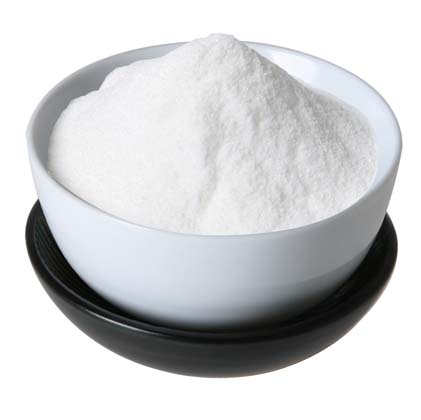
1The Uses of L-Arabinose
1.1 Inhibition of Sucrose by L arabinose
It was found that L arabinose could inhibit the digestion and absorption of sugars by inhibiting the activity of catabolic enzymes. As early as 1996, Seri K J et al [5] published a study on the inhibition of intestinal α-glucosidase activity by L arabinose and found that 10 mmol/L L arabinose inhibited 56.2% of the sucrase activity in porcine intestinal mucosa, and had a weaker inhibition effect on maltase and isomaltase, but no inhibition effect on alginase, lactase, glucoamylase, and pancreatic amylase activity in mouse. L arabinose was found to have no inhibitory effect on maltase and isomaltase activities and no inhibitory effect on alginase, lactase, glucoamylase and mouse pancreatic amylase activities. Based on kinetic analysis, it was found that L arabinose inhibited sucrase activity in a non-competitive manner.
Similar results were found in the study published by Yao Xiaofen et al. in 2012 [6], which found that L arabinose had a high inhibitory effect on sucrase in rat small intestine, and the inhibition percentage of enzyme activity was more than 50% when the concentration of L arabinose was 0.5% of the sucrose concentration, and the inhibition percentage of enzyme activity was 92.1% when the concentration of L arabinose was more than 10% of the sucrose concentration, but the inhibition level did not increase significantly with the increase of L arabinose concentration more than 10% of sucrose concentration. However, after the concentration of L arabinose was higher than 10% of sucrose, the inhibition level of sucrase did not increase significantly with the increase of the added amount. Similarly, L arabinose inhibited the decomposition of maltose and α-dextrin in a dose-dependent manner, but the inhibition was much lower than that of sucrose. The combination of L arabinose and acarbose was also found to be more effective.
1.2 Effect of L arabinose On Blood Glucose and Insulin Levels
L arabinose itself does not affect blood glucose level, and it can inhibit the digestion and absorption of sucrose, so it can reduce the increase of blood glucose and insulin level caused by sucrose intake to a certain extent.Seri K J et al. [5] also found that in vivo experiments, the intake of 50mg/kg and 100mg/kg of L arabinose can inhibit the increase of blood glucose and insulin level significantly after sucrose intake, and both doses can inhibit plasma glucose level by about 50% in the first 15min after intake. In the first 15 min after ingestion, both doses inhibited plasma glucose levels by about 50%, and the inhibitory effect in the 100 mg/kg L arabinose group lasted for 15-60 min in a dose-dependent manner; after 15 min of ingestion, plasma insulin levels were inhibited by 57% in the 50 mg/kg and 64% in the 100 mg/kg L arabinose group. In mice, arabinose was found to inhibit the increase of plasma insulin levels by 57% and 64%, respectively, after 15 min of ingestion. In mice, 25 mg/kg L of arabinose inhibited sucrose-induced blood glucose elevation by 28.3% to 32.2% compared with sucrose alone.
A domestic human study evaluating the effect of L arabinose in combination with sucrose on postprandial blood glucose levels found that consumption of sucrose containing 3%, 5%, 10%, and 100% L arabinose lowered blood glucose levels 1h and 2h postprandially compared to 45g/d of sucrose alone, and a quantitative relationship was found. In addition, it was found that obese volunteers who consumed 10g L of arabinose before three meals per day lost 0.4-0.5kg of body weight in 15d, and the average body weight loss was 5.5kg in 6 months, while there was no significant change in the xylitol control group [7].

Some studies have also tested the effect of L arabinose on blood glucose and insulin levels when added to actual foods. Pol K et al. [8] tested the effect of adding L arabinose to fruit beverages or muffins to test the effect on blood glucose and insulin levels in human subjects (all foods contained 50 g of available carbohydrates and L arabinose accounted for 10% of the sucrose content), and found that L arabinose beverages induced significantly lower peak glucose and insulin levels compared to the control. It was found that the L arabinose beverage induced significantly lower glucose and insulin peaks compared to the control group, and there was no significant difference in blood glucose levels between the L arabinose muffins consumed, but the insulin peaks and the area of increment under the curve were lower. This suggests that the addition of L arabinose to the actual food may reduce the glucose and insulin responses after ingestion, but the actual effect of the addition of L arabinose may depend on the food matrix.
From the analysis of the above literature, it is clear that the inhibitory effect of L arabinose on the decomposition of sucrose is due to the selective and high affinity of L arabinose for the intestinal sucrase-sucrose complex, and the formation of a triple complex with low sucrase activity, which inhibits the sucrase activity through non-competitive interaction, leading to the failure of sucrose to decompose into glucose and fructose, and inhibiting the digestion and absorption of sucrose in the small intestine. By inhibiting sucrase activity through non-competitive action, part of sucrose cannot be broken down into glucose and fructose, and part of sucrose is inhibited from being digested and absorbed by the small intestine, thus regulating blood glucose level and glucose tolerance, etc. Arachidonic acid can play a role in reducing sugar in actual food production, but the effect is correlated with the food processing technology and the food matrix.
2 The Intestinal Regulatory Function of L-Arabinose
2.1 Effect of L arabinose on Intestinal Flora
L-arabinose, which is not absorbed by the small intestine, reaches the large intestine, where it is partially or wholly fermented as a carbon source for intestinal bacteria, selectively stimulating the proliferation of beneficial bacteria and inhibiting the overgrowth of potentially pathogenic bacteria, which plays a crucial role in the intestinal microecosystem and influences the intestinal microbial community homeostasis and the health of the host. Iwata Emiko et al. [9] found that the addition of 1% L arabinose to a 20% sucrose diet increased the weight of the cecum, decreased the dry weight of feces, and increased the number of bifidobacteria in rats compared with no L arabinose.
Similar results were found in the in vitro bacterial proliferation assay, and the data showed that L arabinose could significantly proliferate beneficial bacteria such as Bifidobacterium longum and Bifidobacterium adolescentum in the intestinal tract. In addition, it was also found that L arabinose could significantly proliferate Bifidobacterium longum and Lactobacillus lactis in the intestinal tract, and reduce the number of Enterobacteriaceae, which could regulate the function of the intestine of the animals effectively. L arabinose can be utilized by beneficial bacteria to produce short-chain fatty acids and other metabolites, which can acidify the intestinal environment, promote intestinal peristalsis, inhibit the excessive proliferation of opportunistic pathogenic bacteria, and help to maintain intestinal homeostasis, so L arabinose also has the function of prebiotics.
2.2 Effect of L arabinose on Intestinal Osmolality
L arabinose is a water-soluble sugar. In addition to being utilized by bacteria in the intestinal tract, excessive single intake will increase the osmotic pressure of the intestinal tract, effectively binding water molecules and transporting water to the intestinal tract, which will help to soften the hard stool and reduce the retention time of fecal matter in the intestinal tract, thus laxing the intestinal tract.
2.3 Effect of L arabinose on Intestinal Diseases
The combination of the intestinal flora regulating effect of L arabinose and the defecation promoting properties of increased single intake can enhance intestinal regulation and help to improve intestinal disorders such as constipation and colitis.
Yang Ziming et al [10] used loperamide hydrochloride to establish a mouse constipation model, and the intervention of L arabinose at doses of 4.5, 3.0, and 1.5 g/kg significantly increased the rate of propulsion of small intestinal contents, shortened the time to first defecation, increased the number and weight of defecation within 6 h, and softened the feces of mice. Wang H et al [11] also found the effect of L arabinose on improving constipation in experimental mouse constipation model established by using compound difenoxanolide at doses of 0.5 g/kg BW, 0.75 g/kg BW, and 2.5 g/kg BW. Wang H et al [11] also found the effect of L arabinose in improving constipation in a mouse constipation model. After 15 days of intervention with L arabinose in the dosages of 0.5g/kg BW, 0.75g/kg BW, and 2.5g/kg BW respectively, it was found that among them, 0.75g/kg BW was more effective in relieving constipation, with the rate of ink propulsion of the constipated mice increasing by 36.36%, the time for the first pellet to defecate being shortened by 64min, and the number of pellets and weight of the stool increasing by 6min, respectively. The number of pellets and weight of feces increased by 8.8 pellets and 0.16g, respectively.
In addition, Yang Zi-Ming et al [12] also evaluated the effect of a combination of L arabinose and sucrose on mice with loperamide hydrochloride-induced constipation, and found that compared with the constipation model group, the low, medium, and high dosage groups significantly improved the constipation symptoms of the mice, with the best effect of 54% L arabinose + 46% sucrose (3.0 g/kg BW), which was more effective than that of L arabinose (1.62 g/kg BW) alone. L arabinose alone (1.62g/kg BW). The above analysis shows that a certain dose of L arabinose can alleviate constipation symptoms and is more effective when combined with sucrose.
In addition, L arabinose was also found to alleviate the symptoms of colitis in mice.Li Y et al. [13] used 400 mg/kg BW L arabinose to intervene in mice with dextran sulfate sodium (DSS)-induced colitis for 10 days, which could alleviate the weight loss, disease activity index, and improve the score of the colonic tissues, and reduce the secretion levels of pro-inflammatory factors, such as IL6 and TNF-α, and inhibit p38-/p65- dependent inflammatory activation. The anti-inflammatory effect of L-Arabinose was found to be related to the composition, diversity and abundance of intestinal microorganisms, and the anti-inflammatory effect of L-Arabinose was found to be related to the composition, diversity and abundance of intestinal microorganisms. Similarly, the protective effect of L arabinose against colitis or inflammatory bowel disease was also demonstrated using Caco-2 cells.
3 L arabinose in Food Applications
L arabinose is a kind of natural monosaccharide, the sweetness is pure, can provide a certain degree of sweetness to the food; as a reducing monosaccharide, it can occur the common melad reaction and caramelization reaction in the food; not only is it basically not utilized, it does not affect the blood glucose level, there is no GI value, and it has the function of inhibiting the digestion and absorption of sucrose and promoting the bowel movement. Therefore, based on the good processing characteristics and physiological functions of L arabinose, it has been used in many kinds of food products, such as table sugar, candy, beverages and intestinal regulation.
3.1 Table Candy
First of all, L arabinose can be used as table sugar, replacing household sugar (white sugar) in all kinds of cooking, drinking and baking. Firstly, L arabinose can be used alone to completely replace daily sugar, such as Tang & Tang's food-grade refined L arabinose and Coffee Mate powdered sugar. Secondly, L arabinose can also be added together with other sweeteners, often compounded with sugar alcohols such as erythritol and other high-frequency sweeteners such as steviol glycosides and rosmarinic acid glycosides, such as zero-calorie candies from Yuanqi Forest. In addition, it can also be used in combination with sucrose. Clinical studies have proved that the GI value of white granulated sugar containing 5% L arabinose is 52, which belongs to a kind of low GI compound sugar, and it is friendly to ordinary people, especially diabetic people, and is conducive to controlling the level of blood glucose.

Since the substitution ratio of white granulated sugar is only 5%, it can effectively reduce the GI value of the food while maintaining the taste and physical and chemical properties of the original product, reduce the fluctuation of blood glucose and insulin caused by the consumption of sucrose, and alleviate the burden on the body. At present, this low GI compound sugar has been applied in some products, such as the canned yellow peaches with sugar water of Lin Jia Pao, which not only maintains the taste of natural white sugar, but also reduces the increase of blood sugar level caused by the consumption of canned food.
3.2 Confectionery
The application of L arabinose powder in confectionery products is mainly of two types. Firstly, it is used to inhibit the sugar content of the confectionery itself, for example, one of the Agaricus gummies from Ganjuyuan is made of brown sugar, Agaricus gummies and L arabinose, because brown sugar is a sucrose, and the added L arabinose is mainly used to inhibit the digestion and absorption of brown sugar. Secondly, it is used in sugar control products related to the suppression of exogenous sugar intake from daily diet, often used in conjunction with white kidney bean extract, which suppresses starch in food, and L arabinose, which suppresses sucrose, especially suitable for people with a sweet tooth and food control, such as Besunyen's Break Control Program - White Kidney Bean Pressure Candy and Bearkoko White Kidney Bean Pressure Candy, among others.
3.3 Beverage Category
Currently, L arabinose is also added to some beverages, including low-potency fruit wines, meal replacements and sugar-control beverages. L arabinose is added to Wuliangye's low-grade fruit wines for women, such as Xianlin Fruit Wine Fresh Plum Flavor and Bailu Pomegranate and Plum Honey Brew, which not only play a role in flavoring, but also inhibit the digestion and absorption of the added white granulated sugar. At present, there are many meal replacement and sugar control products with added L arabinose in the market, mainly including two kinds of solids and liquids, such as the high-fiber konjac meal replacement powder of Wugu Moufan, the low-fat latte of KEEP - white kidney bean solid drink, the grain legend of Wahaha - quinoa collagen peptide yogurt drink, and the Liangpin Puzi's Liangpin Feiyang - protein meal replacement shake, etc., which also make use of the sugar-reducing function of L arabinose and the L arabinose is difficult to be digested and absorbed. L arabinose is a hard-to-digest and absorb sugar, which can slow down the digestion and absorption of food and provide a satiating effect.

3.4 Drinks
Since L arabinose is a proliferating factor for intestinal probiotics such as bifidobacteria and can promote bowel movement, it is used in products for bowel regulation and bowel movement promotion.L arabinose is used as a prebiotic in combination with other prebiotics and probiotics, such as Deret Bio's Solid Power Enzymes, and Tang Wo Tang Factor of Tang Wo Tang brand. In addition, in products that promote bowel movements, such as Besunyen's Onion and Waist Comprehensive Botanical Drink, it can help regulate the intestinal tract and improve constipation.
3.5 Other Categories
In addition to the products mentioned above, L arabinose is also added to other food categories, such as powdered formulas (Sanyuan's Jin'ai Yi Nutrient Nutritional Milk Powder, Meridian's Goat Village-Tianbao Probiotic High-Calcium Goat Milk Powder for the Middle-aged and Elderly), and confectionery (Sucrose-Free Whole Wheat Bread from Liangpin Shop).
4 Summary and Outlook
With the rise of sugar reduction in recent years, L arabinose has received more and more attention from the food industry. Based on the in-depth research on the physiological functions and applications of L arabinose, its glycemic and intestinal regulatory functions have been relatively clear and have been successfully applied in many types of food. Based on the in-depth research on the physiological functions and applications of L arabinose, its functions of glycemic control and intestinal regulation have been well defined and it has been successfully applied in many kinds of food products. In the future, it is necessary to continue to explore the new physiological properties of L arabinose, and to develop the new directions of its applications.
References:
[1] Song Jianmin, Wang Dehai, Wan Rongsheng, et al. A method for preparing L arabinose from corn kernel: CN111004824A [P]. 2020-04-14.
[2] MENG Yue, YANG Zhiqiang, KANG Lining, et al. A method for producing L arabinose from corn kernel: CN110468169A [P]. 2019-11-19.
[3] Wang L, Wang Y, Li Y, et al. Progress in the study of physiological activity of L arabinose [J]. Journal of Food and Biotechnology, 2021, 40(1): 20-27.
[4]Yao Xiaofen, Zhang Lishi, Yang Yuexin. Progress of intestinal health effects of 4 oligosaccharides and L arabinose [J]. Health Research, 2012, 41(2):344-348.
[5] Seri K J , Sanai K , Matsuo N , et al. LArabinose selectively inhibits intestinal sucrase in an uncompetitive manner and suppresses glycemic response after sucrose ingestion in animals [J]. Metabolism , 1996, 45(11):1368-1374.
[6]Yao Xiaofen, Wang Xin, Ying Yin, et al. In vitro study on the inhibitory activity of L arabinose on α-glucosidase [J]. Chinese Journal of Food Hygiene, 2012 , 24 (2): 102-105.
[7]Mr. Liu Xingrong, Mr. Zhu Daochen, Mr. Sun Lu, et al. Effect of L arabinose on blood glucose level and body weight in humans [J]. Health Research, 2013, 42(2):295-297.
[8]Pol K , Mars M. Larabinose and D-xylose : Sweet pentoses that may reduce postprandial glucose and insulin responses[J]. Food & Nutrition Research , 2021 , 65.
[9] Iwata E , Degawa Y , Sawaya Y , et al. Effect of sucrose with Larabinose on the number of bifidobacteria in the rat cecum [J]. The Japanese Journal of Nutrition and Dietetics , 2007 , 65 (5): 249-254.
[10]YANG Zi-Ming, DONG Zhong-Xi, WU Jian-Zhang, et al. Study on the laxative effect of L arabinose [J]. Food Research and Development, 2013 , 34(5):7-9.
[11]Wang H , Zhang W X , Jiang B. Constipation-relieving effect of Larabinose [J]. Tropical Journal of Pharmaceutical Research , 2020 , 19(1):95-99.
[12] YANG Zi-Ming, DONG Zhong-Xi, WU Jian-Zhang, et al. Study on the laxative effect of L arabinose and sucrose complex on mice with constipation model [J]. Food Industry Science and Technology, 2012 , 33(23):362-363, 392.
[13]Li Y , Pan H O , Liu J X , et al. Larabinose inhibits colitis by modulating gut microbiota in mice [J]. Journal of Agricultural and Food Chemistry , 2019 , 67(48):13299- 13306.


 English
English French
French Spanish
Spanish Russian
Russian Korean
Korean Japanese
Japanese